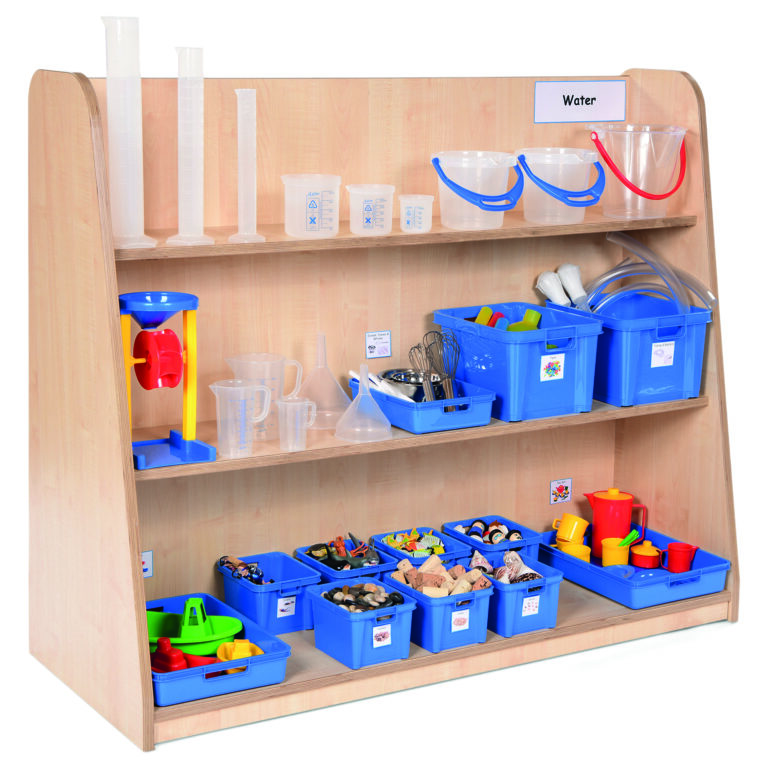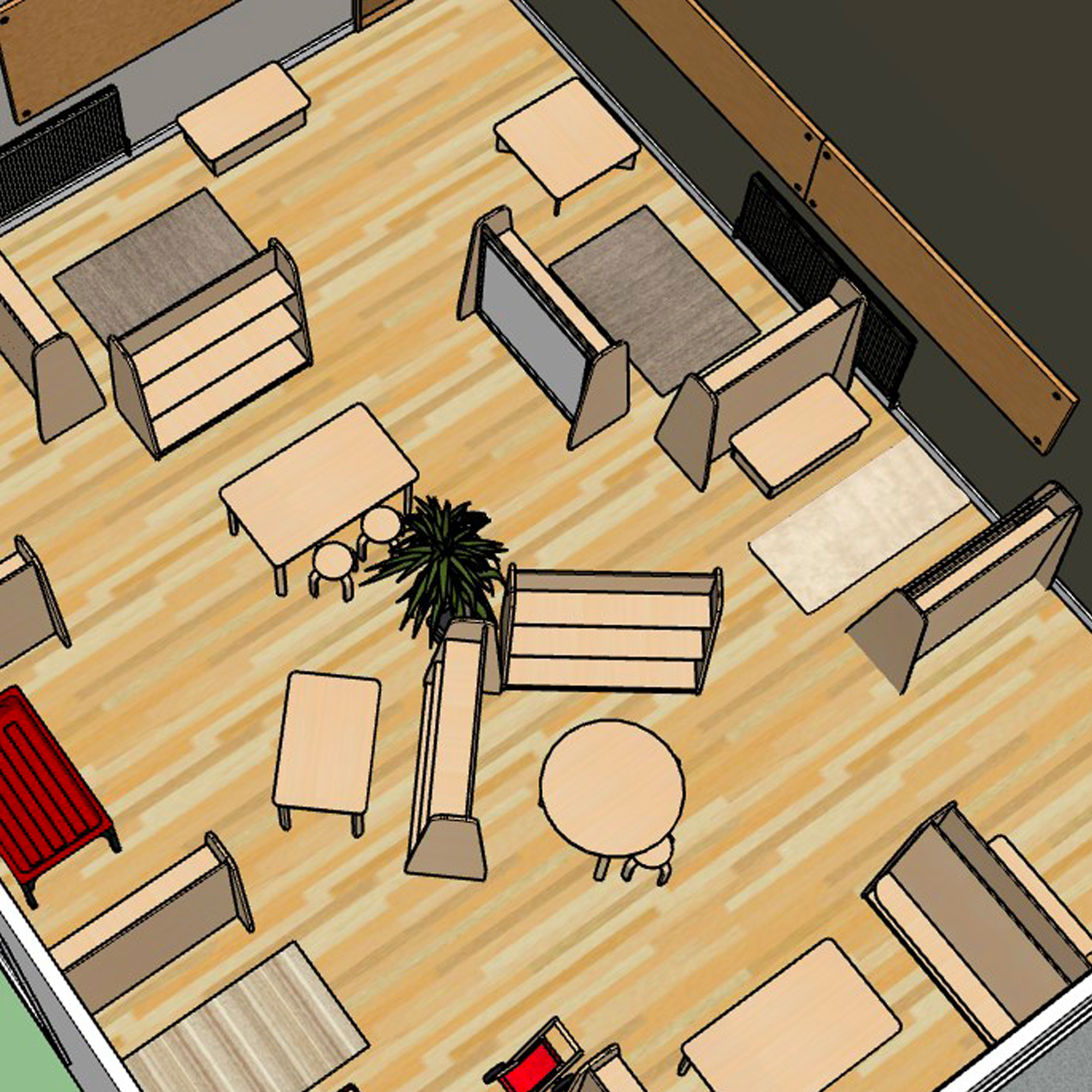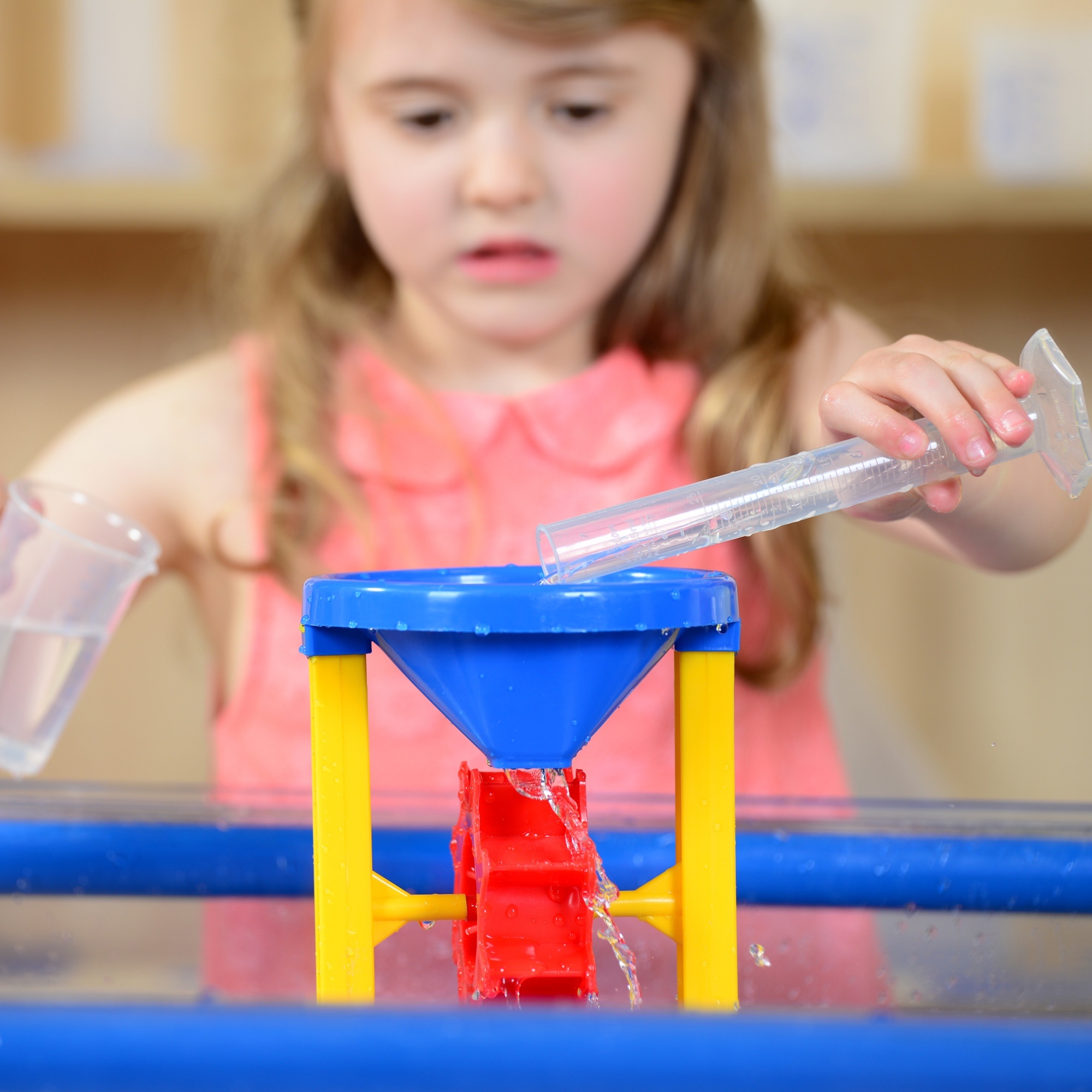Exploring and experimenting with water is a key fascination of many children – and if you have it available continuously, you may even find that some children go back to it a lot! Should this be a worry? Well, not as much as you think.
This article is also available as a podcast:
Continuous Provision – The Water Area
If you plan your water area well, you’ll ensure that it’s packed with a wealth of opportunities for scientific and mathematical thinking as well as opportunities for storying and developing narrative.
Of course, this learning will depend on how well you resource your water area and also how well you teach within it. You can’t simply set-up an area and expect children to know how to use it – you have to teach children from the very beginning – how to use the resources, how to select them, handle them and look after them – helping children to be respectful of what’s been provided. You’ll also need to help children to tidy away when they’ve finished using the resources, so that your water area remains well-organised at the end of each session or day.
If you consider what it is that children naturally choose to do in water whether they are playing with a bowl of water, investigating puddles or having a bath, then this will help you to understand what children are going to do and therefore learn in your water tray.
Don’t try to shoehorn learning into the water area that isn’t a natural link – by adding numbers for example – water is not the best place for children to learn either number or letter recognition naturally or easily.
Water is for pouring, filling and emptying; it’s for scooping and stirring and whisking; it’s for dropping things into and pushing things down; for diving objects down into and seeing objects float; for pretending it’s the sea or a river.
So, water is best used for learning about materials and how they move; finding out about forces – what makes things move – about speed and direction; experimenting and wondering why; problem solving.
It’s also good for maths: all that pouring, holding and transferring water from one container to another is all related to learning about volume and capacity. It helps your children develop a sense of how much things hold and helps them see how the shapes of containers affects this.
So, to maximise this learning you need to resource well. Have graded containers, beakers and cylinders, regular and irregular shaped bottles and buckets, different sized scoops and spoons as well as lots of tubes, sieves and water wheels through which water moves in different ways.
And if you want to encourage greater imaginative play, you will need small world creatures, fish and dolphins for example, and boats of different sizes that can hold objects and people – so that storying can take place.
Above all else, you will need to prioritise time for adults to engage in children’s play in the water area. Sometimes you’ll work with a small group to focus in on one of these key aspects of learning – science, maths or storytelling – to ensure children gain some direct teaching, and sometimes you’ll do a short whole class session to show and tell, to embed a certain idea or explain a concept using the resources and sharing what another child has done.
Things to think about:
- Are all adults able to articulate the learning that you have planned for the water area?
- Have you carefully introduced and modelled the resources and their possibilities?
- Do all adults value what they see your children doing?
- Do they use good vocabulary when talking to the children about what they are doing?
- Are your children supported to use this language too, as they tell you and other children what they are exploring and what they have noticed or found out.
At the end of the day it’s all about the teaching. So, understand what children do naturally in an area, resource it well to maximise this and give up your time to teach and embed key learning.
Find out more

Facilitate children’s natural desire to experiment with water by offering our exciting ready-made Water Resource Collections

Audit your indoor continuous provision to ensure that you have maximised the learning opportunities in all areas of provision.

Explore our Inside Out pack of support materials for the Water Area with practical advice, training videos and inspiration to help you make the most of your provision.

